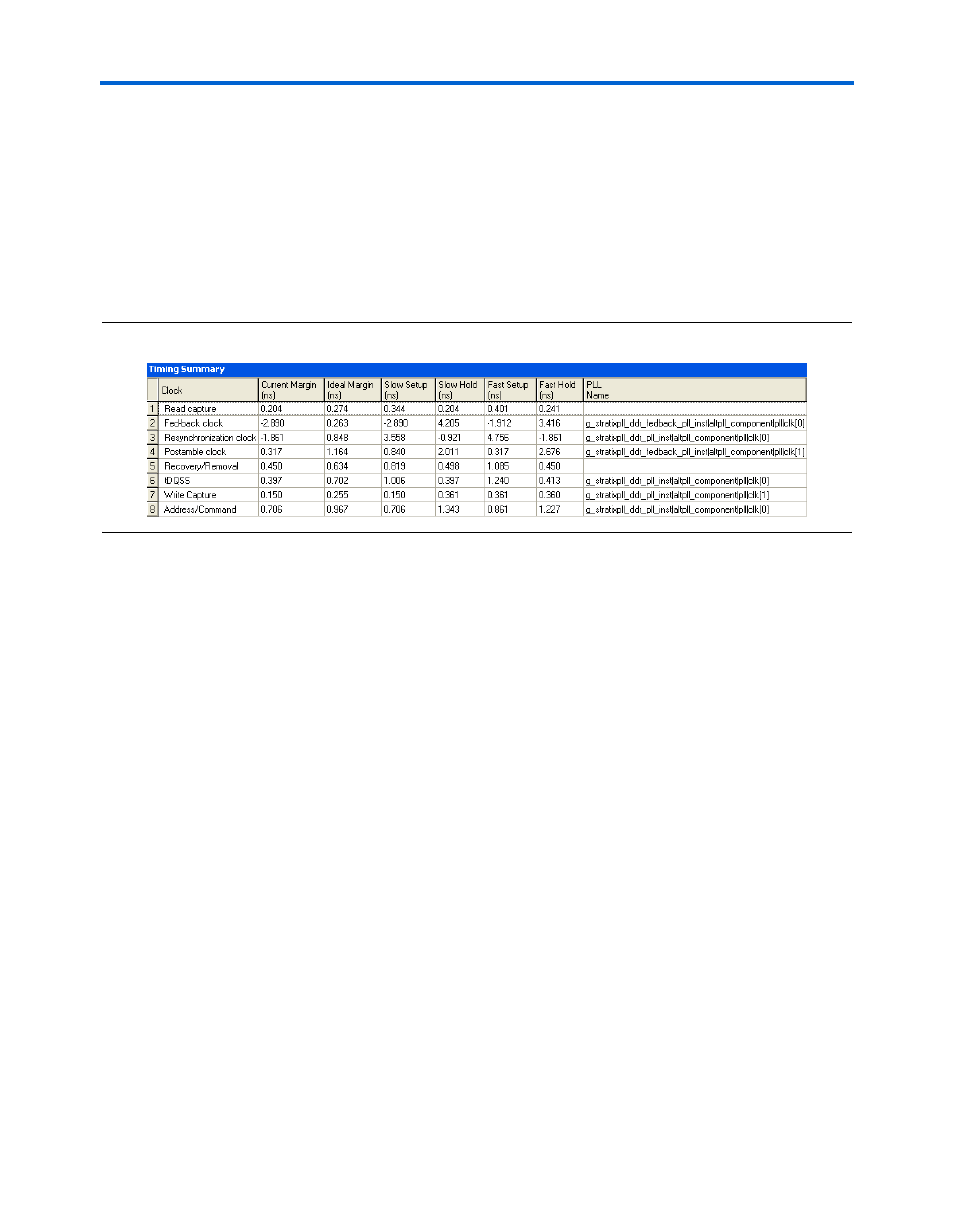Changing clock cycles – Altera DDR Timing Wizard User Manual
Page 87

Altera Corporation
3–27
November 2007
DDR Timing Wizard User Guide
Using the dtw_timing_analysis.tcl Script
You can then use the -auto_adjust_cycles switch to see what the
predicted margin is after you change the clock cycle of the
resynchronization clock. The Timing Summary panel from the following
command is shown in
Figure 3–14
:
quartus_sh -t
c:\altera\72\quartus\common\tcl\apps\gui\dtw\
dtw_timing_analysis.tcl -dwz_file ddr_settings.dwz
-auto_adjust_cycles
Figure 3–14. Predicted Margin after Adjusting Clock Cycle Selection
When you use the -auto_adjust_cycles switch, the
dtw_timing_analysis.tcl
script changes the clock cycles in the DTW per
the previously-ran results. You cannot go back to the clock cycle
selections used in the compilation unless you re-import the settings into
DTW.
Changing Clock Cycles
This is applicable to DDR2/DDR SDRAM interfaces only.
The clock cycles determine when data should be resynchronized or when
the DQS postamble control needs to be asserted. The MegaWizard has
one clock cycle selection each for resynchronization and postamble paths,
regardless whether it is a 1-PLL or 2-PLL implementation mode. This
clock cycle selection always pertains to the path that is crossing the
system clock domain, for example from the second resynchronization
clock to the system clock domain. You can change the clock cycle in the
Manual Timings
page in the Parameterize section of the legacy
controller.
f
Clock Cycle 0 begins from the first rising edge of the system clock after
the first rising edge of the DQS signal, assuming a CAS latency of 3. For
more information, refer to Appendix A. Manual Timing Settings of the
.